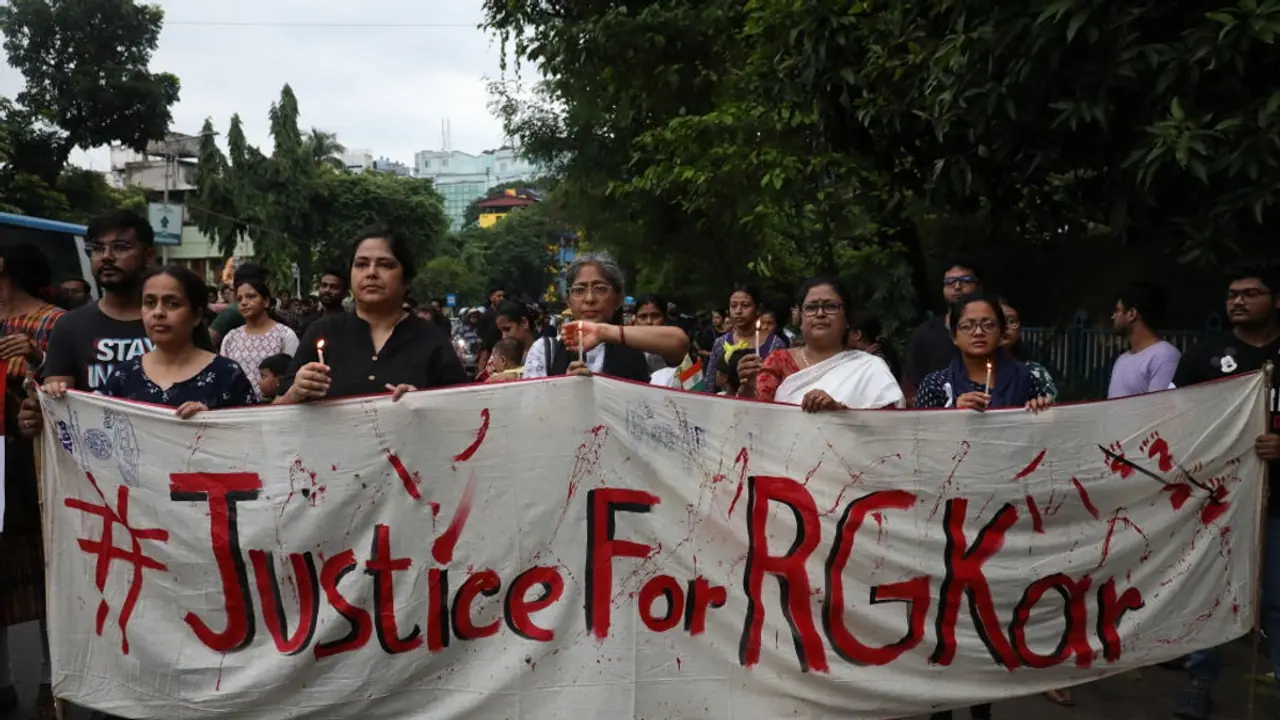The ongoing strike by junior doctors in West Bengal has evolved into one of the longest and most significant protests by medical professionals in the state’s recent history reportedly since the 1980s.
The ongoing strike by junior doctors in West Bengal has evolved into one of the longest and most significant protests by medical professionals in the state’s recent history reportedly since the 1980s. This action, which began on August 9, has surpassed previous protests in duration and intensity, marking a pivotal moment in the history of medical activism in Bengal.

The current agitation was sparked by the tragic discovery of a 31-year-old junior doctor’s body in a seminar hall at RG Kar Medical College & Hospital. This incident ignited a wave of protests across 27 other medical colleges in West Bengal, with medical students in various other states also joining the movement.
Despite appeals from the Supreme Court, which led to the resumption of work by doctors in other states, junior doctors in Bengal have continued their strike, refusing to attend to patients until their demands for justice are met.
Dr. Tapas Francis Biswas, a surgical gastroenterologist and vice-president of RG Kar Medical College's ex-students' association, told Times of India, “As far as I recollect, this is the longest agitation by junior doctors in Bengal since the 1980s. The protest in 1983, which was sparked by demands for better facilities and infrastructure, lasted about a week. This current strike has far exceeded that duration and intensity.”
In recent times, the longest agitation by junior doctors occurred in 2019, following a violent mob attack on intern Paribaha Mukherjee at NRS Medical College, which led to severe injuries. This incident triggered a nationwide strike, and the protests only ceased when Chief Minister Mamata Banerjee intervened after a week.

Cardiothoracic surgeon Dr. Siddhartha Chakraborty recalled an earlier protest in the 1970s that also involved junior doctors and senior professionals demanding better medical facilities. “Back then, there was neither media support nor social media, and the strike lasted about 10 days. This current movement is unique in its scale and support from all sections of society,” Dr. Chakraborty told TOI.
The current protest is distinctive not only for its duration but also for the nature of the issues being highlighted. The agitation has brought to light a range of problems including academic and financial irregularities in medical institutions. “This movement is different from earlier ones as it addresses sensitive issues involving serious crime and systemic flaws within the medical sector,” explained physiology professor Arnab Sengupta from IPGMER.
Since the 1970s, the number of undergraduate medical colleges in Bengal has increased from seven to 28, reflecting the growth of the medical education sector. The junior doctors have established the West Bengal Junior Doctors' Front to coordinate their efforts across these institutions.
Nabanna Abhijan rally in Kolkata
Meanwhile, on Tuesday, violent clashes erupted between police and protesters in various parts of Kolkata and the neighboring Howrah, as demonstrators attempted to break through barricades in a march towards the West Bengal secretariat.
The protesters were demanding the resignation of Chief Minister Mamata Banerjee over the rape and murder of a doctor at RG Kar Medical College and Hospital.
Clashes broke out at MG Road, Hastings Road, and areas near Princep Ghat, as well as Santragachi and Howrah Maidan, resulting in injuries to both protesters and policemen. To disperse the crowd, police resorted to lathicharge, water cannons, and tear gas, as protesters hurled stones and bricks at the security forces and attempted to topple the barricades blocking their path to the state secretariat.
Earlier in the day, police resorted to lathicharge, water cannons, and tear gas at the Kolkata end of Howrah Bridge and near Santragachhi Railway station on Kona Expressway to disperse protesters attempting to march forward. At Santragachhi, tensions escalated as agitators threw bricks at the police, injuring several officers, while protesters claimed that police action resulted in injuries to students.
The situation intensified when the student organization 'Paschim Banga Chhatra Samaj' and the dissident state government employees' platform 'Sangrami Joutha Mancha' launched their 'Nabanna Abhijan' rally from multiple locations.
